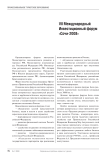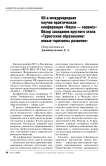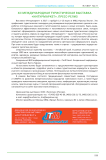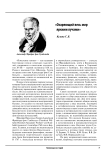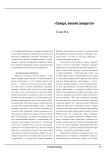Статьи журнала - Современные проблемы сервиса и туризма
Все статьи: 1076
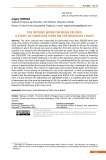
The intense work on mega cruises: a study of cabotage ships on the Brazilian coast
Статья научная
The cruise industry was responsible for generating more than 500,000 direct jobs (crew and workers of onshore companies) and for paying more than $21 billion in wages in 2019 worldwide. Despite the expressive numbers, very little is guided or discuss the working conditions to which the crew of sea cruises is subjected. From this context, the objective of this research is to measure the intensification of crew work on cruise ships, based on a study of cabotage ships on the Brazilian coast, in the period between the summer seasons of 2013/2014 and 2019/2020. The intensification of work appeared in the economic history of humanity especially in times of capital expansion or at times when legislation imposed limits on working hours. If there are limits to the length of journeys, the technology will be the instrument used to ensure increased productivity, making it work more intensely in shorter intervals. In the case of cruises, it was found that the intensity of work has increased over time, according to the increase in the capacity of ships. This is because megacruises have proportionally fewer crewmembers than smaller cruises aiming at reducing the cost of the operation, as well as cheeping trips to the consumer market, through the massification of production. The results of this research indicate that the passenger/crew member ranged from 3.09 to 3.34, considering all ships that were in Brazil between the 2013/2014 and 2019/2020 seasons. In addition,while the number of passengers per ship grew by anaverage of 9%; the number of crew members per ship grew by an average of 8%. It is concluded that the operation of megacruisestends to increase,even if slowly,the intensification of the crew’s work.
Бесплатно
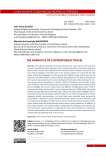
The narrative of contemporary travel
Статья научная
The ways of narrating the journey have become a great way in the early 21st century. They left behind the chatting circles, the film productions, the books and gained space on the Internet. This research aims to know how social networks are used by content creators (bloggers and influencers in the tourism industry) to record the trip and reflect on how the pedagogies in these spaces teach different ways of traveling. For the treatment and data analysis, content analysis was performed. The way of carrying out the research was inspired by the studies developed in Cultural Studies and based on various sources whose composition or content related to traveling, such as books, magazines, websites, and, mainly, blogs and social networks. Among the several authors studied, we highlight the research conducted on the different manifestations of the “self” in contemporary times, among them, texts by Zygmunt Bauman (2008), Gilles Lipovetsky (2016) and especially Byung-Chul Han (2015, 2016). The main results highlight that, in contemporaneity, the consumption of travel reports once made through books, technical magazine articles, documentaries, and even blogs were gradually being replaced by practical tips - which fit in spaces standardized by the creators of social networks such as Facebook and Instagram. In these spaces, users are educated to look at places in fragments. Ready-made lists and itineraries reduce cities to some landmarks. In addition, in these same “spaces,” the travel becomes a stage and the landscapes into scenarios for the most diverse representations, reinforcing the ideas of an ephemeral, transparent, volatile, individualistic, and accelerated life that mark them and teach recipes for traveling that ends up repeating itself on the screens.
Бесплатно
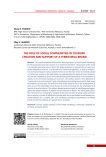
The role of social communities in tourism: creation and support of a territorial brand
Статья научная
This article examines the essence and importance of social media marketing for the promotion of tourist services in an online environment. The purpose of the study is to identify promising ways to boost the target audience by communities in social networks adapted for tourism. A systematic and situational approach, as well as classification, formal and logical analysis and desk research are the main research methods. Based on a literature review on the approaches to understanding the types of social communities and the importance of the correct positioning of advertisements in the formation of loyalty to the territorial branding of customers, the authors present their definition of "community in a social network", give a classification of existing communities, and reveal the features of each type. The practical value of the research lies in the development of ways to use the advantages of each type of social community for the development of tourism in local territories. The authors provide practical tools for identifying and aggregating the target audience in popular social networks in Russia. The main paths of further research are a comparative analysis of the best practices of using social communities in tourism, in order to effectively interact with the target audience and develop recommendations for a content plan of a marketing strategy for promoting a territorial brand and tourist products of a specific local recreation.
Бесплатно
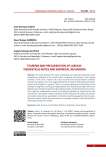
Tourism and precarisation of labour: theoretical notes and empirical incursions
Статья научная
This study discusses the issues of hijacking and capturing subjectivity under manipulative capitalism in the current labour conditions and relations in the tourism economy. In this sense, it points out to the structural trend of precarisation of labour among travel agents, even more aggravated by the demand for high professional qualification and excellence in services. There is a certain adjustment of the worker to the company's imaginary; a feeling of indispensability and worthiness for effort and merit; adhesion and involvement with the organizational whole, materialized by teamwork; belief in effective collaboration at work; and feeling of self-delivery, self-giving and selfcommitment. This implies a labour context of intense imposition of conduct on workers, who need to demonstrate sympathetic and total personality engagement for the reproduction of capital, despite the precariousness of working conditions and relationships in many sectors of tourism activity.
Бесплатно
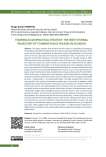
Tourism as geopolitical strategy: the institutional trajectory of tourism public policies in Ecuador
Статья научная
This paper analyzes how tourism has been used as a geopolitical strategy by the Republic of Ecuador throughout the last century, gaining remarkable relevance in the recent period, being considered as an alternative source of development in the context of the restrictive capacities and resources of the National State. In particular, we analyzed the institutional trajectory of tourism public policies in Ecuador, between 19902020, focusing on the role and form of state action in this process. To this end, an empirical study was carried out, based mainly on secondary data collected from the official press of the Republic of Ecuador, in its three branches (executive, legislative and judiciary). From a total of 19,026 documents initially identified, we reviewed and found a total of 223 normative acts specifically dedicated to the tourism issue. This material was analyzed using the institutional model of public policy analysis elaborated by Pimentel (2011; 2014), structured in 3 dimensions and 5 categories, which deals with the normative, regulatory and cognitive dimensions, drawn upon a synthesis of several categories identified by Scott - among others - on institutional theory. The data showed that: a) there is a clear growth in the volume of national normative acts in the period in question, which suggests that tourism has become a State policy, b) the policies are “initiated” and have the executive as the main participating actor, c) however, they are mostly generic acts and poorly linked to operational actions (with plans, projects and measurement instruments) what suggest that extraofficial actions have been taken in order to promote and operate the sector, and d) they are characterized by the absence of resources to make them feasible. We conclude tourism has become a state policy, in terms of the discursive and also institutional level of official actions taken by the national government, as well as the practice we can see in relation to inbound and domestic flows. However, the way the subject is handled lacks support, especially material and financial one, for its effective execution, which suggests that it may have any other - no official and/or institutional - different force driving the sector, while public policies appear as a shadow on the sector's performance.
Бесплатно
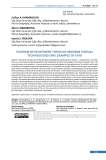
Tourism development through modern virtual technologies (the example of Ufa)
Статья научная
The article considers one of the directions of development of the tourism industry - virtual tourism. Currently, there is a trend towards rapid development and introduction of virtual technologies in all areas of people’s lives. The tourism business is no exception. it most actively uses virtual technologies in the organization of its activities, which help to flexibly and completely segment the development of a competitive tourist offer. Modern tourists prefer non-standard tours with an innovative component. This can be the use of innovative resources, the development of tourist products with innovations, and the use of new forms of service on the route. In the modern period, full of crises, virtual tourism is becoming more and more popular, promising means of promoting any destination, tour. Potential tourists can get acquainted with the sights, cultural, historical and recreational potential of the territory they intend to visit. Then make a choice, stop at the most interesting objects, in the most suitable, exciting places on the planet, while completely free and safe. The authors described the features of tourism development with the help of modern virtual technologies, defined the role and significance of using a virtual tour for modern society and modern business, and offered the author’s virtual tour of old Ufa “Through the times”. Only a virtual tour can reveal the full depth of the proposed route, connect two epochs, and look into the past. Ufa today, and Ufa historical, preserved only in photos, allows you to draw many conclusions about the development of the city, the preservation of historical and cultural heritage, pay attention to the fact that there is a destruction of historical monuments.
Бесплатно
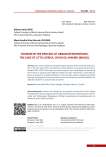
Tourism in the process of urban interventions: the case of Little Africa, in Rio de Janeiro (Brazil)
Статья научная
The article analyses the implementation process of the Porto Maravilha project in the Port Zone of the city of Rio de Janeiro (Brazil), covering the period of one decade (2011-2021). Returning to previous projects, the article begins by describing the territory in question from different models of urban intervention, presenting the space in question as a target of disputes. In this scenario, assets recognized as World Heritage, underground memories and narratives of resistance provide possibilities for reflection about the social function of tourism.
Бесплатно

Tourism strategies of the Northern Europe: comparative analysis
Статья научная
The formation of models and visions for tourism development in the world’s countries differs not only in approaches and tools, but also in the detail and specification of States. Forming the image of the country, strategic development guidelines, defining the contours of tourist projects, understanding the forms of support for the business sector, as well as the development of standard-setting practices is impossible without a clear representation of the target audience. This article discusses the practice of developing national tourism strategies in Greenland, Sweden, Finland, and Norway. These territories are chosen as a comparison base, since the basic environmental conditions in them are almost identical, which complicates the formation of unique strategic landmarks. However, the analysis of documents, national strategies have been identified in the basic terms, which are based on country factors, which emphasize in the future, the conditions that created, creates and will create in the long term for the business sector. Within the framework of national strategies of the Northern EU countries, the mission and vision are set out, key segment groups are fixed, the structure of communication between consumer groups and tourist offers is set out, and the institutional framework for tourism development is set out. It is noteworthy that, in General, all strategies are road map projects, written in the spirit of project management. Recognizing the conditions for sustainable and responsible tourism as a base, the Nordic countries ‘ tourism strategies include requirements for all project parties: tourists, tourist companies, tourist associations, and government representatives.
Бесплатно
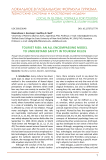
Tourist risk: an all encompassing model to understand safety in tourism fields
Статья научная
Though risk perception theory has advanced a lot over the last decades, its preferred methodologies much of them closed-led questionnaires or intrusive instruments obscures the derived conclusions. This text aims not only to explore the problems and limitation of risk perception theory to understand the difference be- tween fear, anxiety, panic and risk, but also the tourist-safety. The adoption of risk research, post 9/11 was based on quantitative methods alone. This creates a serious conceptual myopia to understand the connec- tion of risk and late-capitalism. Our attempt to fulfill this gap is shown in this essay-review
Бесплатно
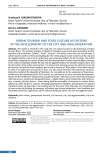
Urban tourism and food culture as factors in the development of the city and agglomeration
Статья научная
The article is devoted to the study the role of food culture in the formation of urban tourism flows. The authors propose to divide all catering venues into types according to their specifics and orientation: “global”, “local”, “diverse”. The article shows the role of each type in urban tourism, both in terms of providing for the needs of guests and residents of the city and the agglomeration, and in terms of forming socio-economic effects for the territory. The article shows that changing the culture of food and the development of urban tourism affects changes in the cultural landscape of both the city and the agglomeration, the specifics of agriculture, and the formation of the urban environment. It is shown that catering venues are attractors not only for tourists, but also for local residents and create a variety of “third places” that allow citizens to relax in an informal environment in their city. The article describes the experience of Kazan. Being the capital of the Republic of Tatarstan, the city adheres to the expansion of tourism potential since the beginning of the 21st century as a priority of its socio-economic development. Kazan has the trademark “Gastronomic Capital of Russia”. The city has more than two thousand catering venues, covering all designated types - global chains, local restaurants with local cuisine, a variety of food venues - from dining facilities accessible to everyone to unique dishes offered by chefs (author’s cuisine). Emerging gastronomic traditions and preferences support traditional types of agriculture and cooking and at the same time stimulate the development of new sectors of farming, for example, viticulture and cheese production. Such traditions and innovations form the appearance of the cultural landscape of the city and the agglomeration.
Бесплатно
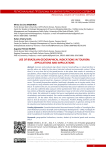
Use of Brazilian geographical indications in tourism: applications and implications
Статья научная
Services and products (agri-food, mineral, handcrafting, or industrial) from a specific place are linked to the place historical-cultural-environmental context. When there is a very close link of the goods/service to the place that renders it notoriety or specificities, these might be recognized as Geographical Indications (GIs). By bearing the territory’s name and other immaterial aspects, the GI is naturally assimilated to the region and related activities such as tourism might develop. This tourism application occurs and is studied in several countries. However, in Brazil, this research is limited to particular cases. This raised the question whether (and how) a broader use in tourism exists, thus, we sought to verify whether and how geographical indications are allied to tourism in Brazil. To achieve this aim, we promoted a theoretical discussion related to GIs and tourism, and also collected data using an online questionnaire that was sent to representative entities of Brazilian geographical indications known at the time of the development of this study. We obtained 55 replies that were investigated using descriptive statistics, correlations, and content analysis. Our results revealed tourism activities related to some national GIs. On the other hand, there are some registered, but without effective use (due to lack of structure, articulations, or resources). Another finding pointed out the need to disseminate the theme among tourists and producers in general, aiming at the GI valuation and implementation of actions that promote their use as an asset.
Бесплатно
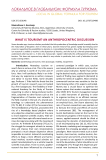
What is tourism? An anthropocentric discussion
Статья научная
Some decades ago, tourism scholars precluded that the production of knowledge would invariably lead to the maturation of discipline. Even in these years, tourism-research has grown rapidly but keeping some concerns respecting the possibilities to become in a consolidated discipline. One of the aspects that tour- ism research is unable to resolve is the dispersion of theories, and the lack of a shared epistemology to understand what tourism is. In this new manuscript I explain informally the anthropocentric ground of tourism. This does not represent any attack to any scholar in particular, but a call of attention to what today is being written.
Бесплатно
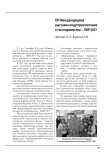
XVI Международная выставка индустрии питания и гостеприимства - ПИР-2013
Краткое сообщение
Бесплатно
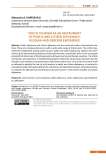
Youth tourism as an instrument of public and citizen diplomacy: Russian and foreign experience
Статья научная
Public diplomacy and citizen diplomacy are the trends of modern international relations. These are complex phenomena with a quite wide range of instruments. This article illustrates the relationship among youth tourism, public and citizen diplomacy, explores the intersection of the theoretical foundations of these phenomena, reveals their place in the conceptual and practical dimension of the foreign policy of Russia and several foreign countries. The article summarizes the experience in implementing projects related to various types of youth tourism, classifies such initiatives and systematizes information about them. As a result, the author made an attempt to identify the role of such projects in public and citizen diplomacy, to construct a conceptual model that demonstrates the mechanism of interaction between these phenomena, to evaluate the effectiveness and prospects of youth tourism in the context of public and citizen diplomacy.
Бесплатно
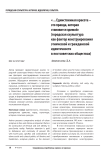
Статья научная
Автор проводит сравнительный анализ городской скульптуры Киева и Астаны как важных факторов конструирования этнической и гражданской идентичности в постсоветских реалиях. Обращается внимание на разрывы и преемственность настоящего с советским прошлым, особенности и противоречия этносоциальной и культурной политики Украины и Казахстана, роль скульптурной пластики как элемента современной урбанистической среды, в формировании базовых компонентов общественного сознания и ценностных ориентиров сложной системы самоопределения постсоветских обществ.
Бесплатно

